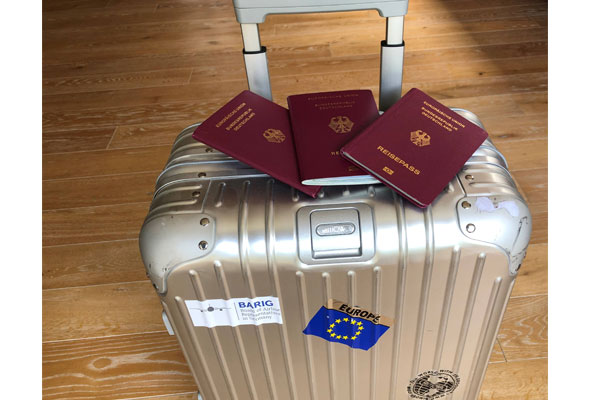
When considering travel options, the choice of luggage can significantly impact your experience. Using an extra large suitcase offers notable advantages such as ample packing space, which is perfect for long trips or family vacations. The spacious interior allows travelers to pack without worrying about running out of room, enabling them to bring various outfits and essentials. Additionally, many modern XXL suitcases are designed to be lightweight and maneuverable, making them easier to handle despite their size.
However, traveling with an extra large suitcase comes with its own set of challenges. These suitcases may incur additional fees at airports due to their size and weight, and navigating crowded spaces with a larger piece of luggage can be cumbersome. Travelers need to weigh these disadvantages against the benefits to decide if an XXL suitcase meets their needs.
Key takeaways
- Extra large suitcases offer increased packing volume
- They can incur additional fees and be harder to maneuver
- Decide based on travel duration and personal needs
Advantages of extra large suitcases
Extra large suitcases have several benefits. Firstly, extra large suitcase dimensions give you ample storage space, allowing you to pack more items for your trip. This can be especially useful for longer vacations or when traveling with family. Additionally, the spacious interior helps to keep your belongings organized and reduces the need to cram items, which can help prevent damage.
Moreover, extra large suitcases enhance protection for your belongings. They are often built with sturdy materials and reinforced corners to withstand the rigors of travel. This added durability ensures that your items stay safe and secure throughout your journey.
Extended storage space and convenience
Extra large suitcases excel in offering substantial storage space. This makes it easier to pack more clothing and essentials, which is particularly beneficial for longer trips. With expandable compartments, these suitcases allow for convenient packing of souvenirs picked up during travels.
The extra space also permits the use of packing cubes to organize belongings systematically, further enhancing ease of access. Whether you’re going on a two-week vacation or a business trip, having ample room in your suitcase reduces the risk of overpacking and ensures that all necessary items are included.
Enhanced protection and durability
One of the significant advantages of extra large suitcases is their enhanced protection for personal items. These bags often feature rigid, hard-shell designs made from materials like polycarbonate, ABS, and aluminum. These materials offer superior durability and are resistant to impacts, reducing the likelihood of damage to the suitcase and its contents.
Furthermore, they provide improved water resistance, keeping clothes and other items dry in adverse weather conditions. The robust build of these suitcases gives users peace of mind, knowing that their belongings are well-protected during travel.
Travel efficiency and comfort
Extra large suitcases are equipped with spinner wheels, facilitating ease of movement through airports and other travel hubs. The wheels enable a 360-degree rotation, making the suitcase more maneuverable even when fully packed. This is particularly advantageous during layover issues or when you need to navigate crowded spaces quickly.
Additionally, these suitcases contribute to quick check-ins at airports as they can be categorized as checked luggage, which means fewer restrictions on weight and size compared to carry-on bags. The design often includes ergonomic handles and adjustable settings, ensuring that the travel experience remains comfortable and efficient.
Disadvantages of extra large suitcases
Extra large suitcases often come with potential additional costs and restrictions, along with challenges in managing oversized luggage during travel. Understanding these drawbacks can help travelers make better packing decisions.
Potential additional costs and restrictions
Many airlines impose baggage fees for checked luggage, with charges typically ranging from $30 to $45 for the first and second bags respectively. Carrying a large suitcase often incurs additional fees due to its size and weight. If the suitcase exceeds the airline’s weight limit, hefty overweight charges can apply.
Some airlines also have restrictions related to the dimensions of checked luggage. These restrictions can limit the type of suitcase, whether softside, hardside, ballistic, or with exterior pockets, which a traveler can bring without incurring extra charges. These factors can significantly increase travel expense.
Challenges with oversized luggage management
Handling large suitcases can be cumbersome. Due to their size, they may not fit in the overhead storage compartments, necessitating checking them in, which leads to further disadvantages. Navigating through airports with bulky luggage can be a hassle, especially in crowded spaces.
Security checks are likely to take more time when dealing with an oversized suitcase. These bags are prone to suffer from zipper issues and quicker wear and tear due to frequent handling. Moreover, waiting at baggage claim for large luggage can delay departure from the airport.
During travel, unpacking and repacking a large suitcase is less efficient than handling small backpacks, causing further inconvenience.
Conclusion
Using an extra large suitcase has both benefits and drawbacks. It allows travelers to pack more items, making it ideal for extended trips or special occasions. However, it often incurs additional fees for checked luggage and can be cumbersome to transport. Weighing these factors can help travelers make an informed decision based on their specific needs.
The article What are the pros and cons of using an extra large suitcase first appeared in TravelDailyNews International.



0 Comments